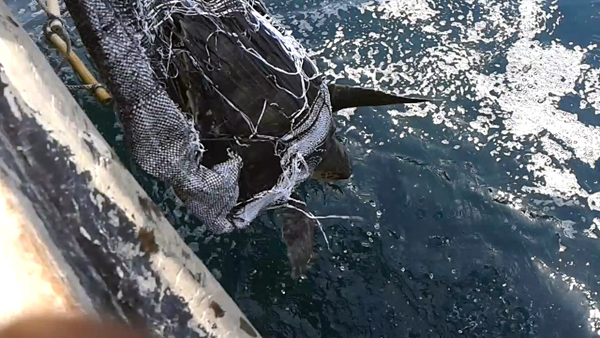Karachi: Fisherman Shakeel’s eyes lit up as he recalled saving an endangered green turtle in early January 2023.
“We had set a net for fishing and were anxiously waiting for the fish to be caught,” Shakeel said, adding that his boat was far out in the deep waters of the Arabian Sea. We suddenly felt a quick movement in the net, as if someone was pulling the net. We saw that it was a strong entangled green turtle that was caught in our net and was struggling to free itself.
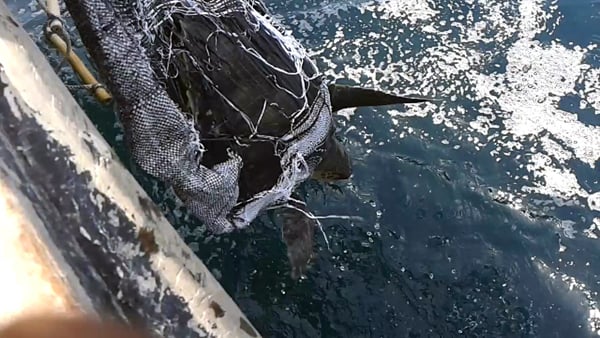
“By slowly pulling the net, we very carefully freed the giant turtle from the net and released it safely back into the sea. We were very happy to see the turtle swimming forward in the sea.
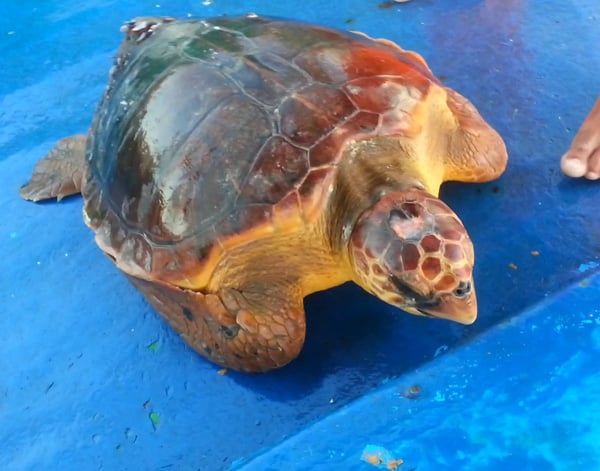
“Until recently, like other fishermen, I did not care about the animals caught in the nets. I was only worried about my catch,” Shakeel said.
But then in 2018, Shakeel got an opportunity to attend a workshop, he says, “This workshop changed my mind completely. In this workshop, Shakeel and his colleagues were taught by environmental experts about rare marine species such as turtles, sharks, etc. And talked about the importance of dolphins etc. and also highlighted their importance and role in the marine ecosystem, and also explained that their population is decreasing due to our careless attitudes. These experts also taught how to carefully release these rare species back into the sea without injury if they accidentally get caught in their nets. These species caught in nets other than fish during fishing are generally called bycatch.
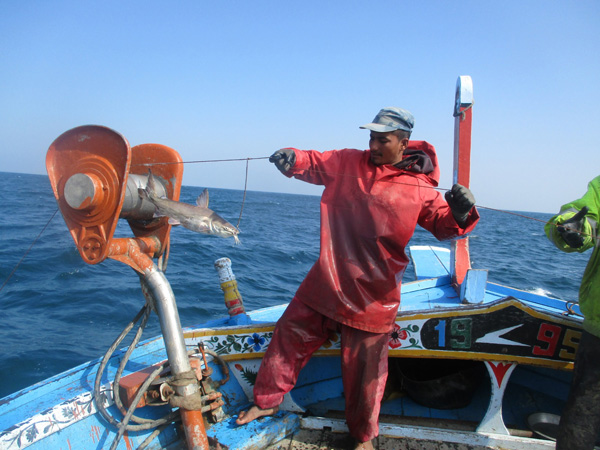
Shakeel is a resident of Ibrahim Hydari, a coastal town in Karachi, Pakistan’s largest city. He is one of the nearly 700 people who have received training under WWF Pakistan’s Sustainable Fisheries Entrepreneurship Project, which has been operating in Ibrahim Hydari and nearby Lagi villages since 2016. The financial support for this project is from Engro Foundation. The objectives of the project include reduction of bycatch and creation of additional employment opportunities, besides the main objective of the project is the promotion of sustainable fisheries in the coastal and marine areas of Pakistan.
Pakistan I dangerous The net From blindly Mahi Gary !
Before 2012, 28,000 turtles and 12,000 dolphins were entangled in various fishing nets in Pakistan’s seas every year, WWF Pakistan Technical Advisor Mohammad Moazzam Khan told ThirdPol. He added that sadly, all the dolphins caught died of suffocation. Moazzam Khan also said that about 21,000 boats were used for fishing on the coasts of Pakistan, of which 13,000 were operating in Sindh and 8,000 in Balochistan. Most of these boats used gill nets. It happens even in big trawlers which proves to be disastrous for marine life. Gill nets are installed like a long wall in the sea, which not only entraps small and large fishes and leads to their extinction, but also other large species become victims.
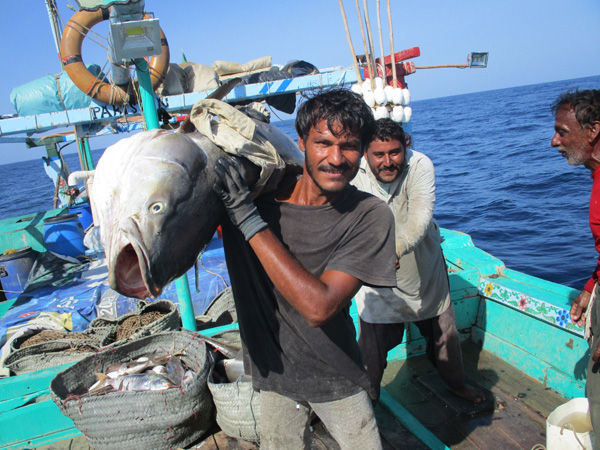
Gill nets have become a major problem for Pakistani marine resources and ecosystems. It consists of very small holes and due to its length, it is installed like an impenetrable wall in the sea, in which the usually desirable small and large fishes as well as rare marine species are hunted.
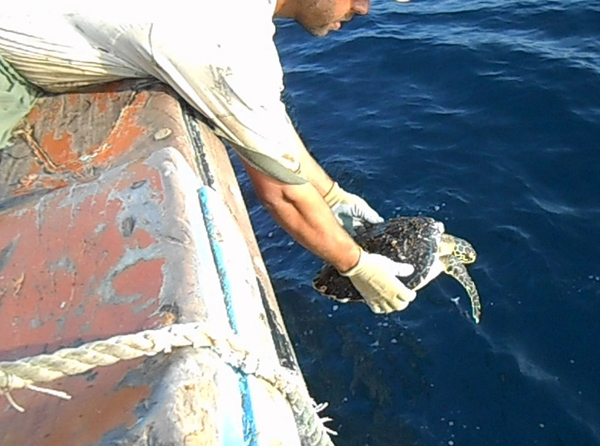
Shoaib Kayani, an assistant professor associated with the Institute of Marine Science of Karachi University, said that according to the definition set by the United Nations rules and an international organization (of which Pakistan is also a member), the Indian Ocean Tuna Commission sets a gill net of two and a half kilometers. should not be longer than but our fishermen’s nets are 15 and sometimes more than 20 km long. He further said that in this regard we have to strictly implement the laws because
According to the report of Assessed bycatch in the country’s gillnet fisheries between 2012 and 2015, the number of fish in the Pakistani sea has decreased by 40 to 70 percent.
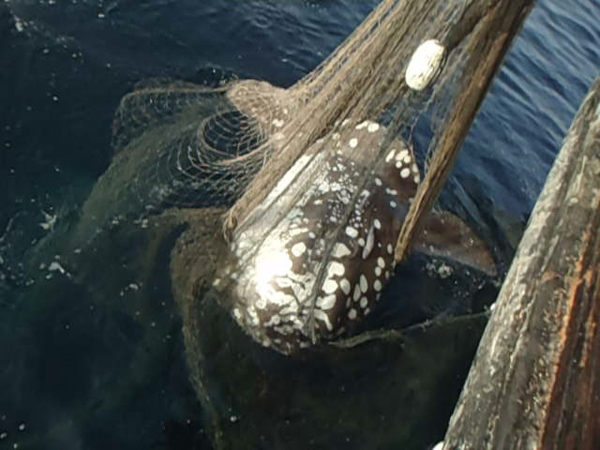
In this regard, WWF Pakistan started a ‘crew-based observer program’ on the coasts of Pakistan. In which more than a hundred boat captains were given public recognition and awards for safely releasing endangered marine species into the sea, encouraging fishermen. He further said that in the last eleven years, 113 whale sharks, 42 sunfish , 7 dolphins, 5 whales, 7 sharks, 96 sea bats, manta and devil rays, giant sea snails and thousands of sea turtles were safely released back into the sea.
Durable Mahi Gary methods Of public Love!
Muazzam Khan says that though the safe release of marine species in the sea and the promotion of awareness among fishermen are important measures, but looking at the risks, it could be said that these are not enough. That is why WWF Pakistan decided to change and innovate in fishing techniques. By gathering folk wisdom and scientific information, we started work on installing gill nets 2 meters below the sea surface in 2015, it was named as sub-surface gill nets. The results were spectacular, with up to 98% reduction in whale, dolphin and whale mortality.
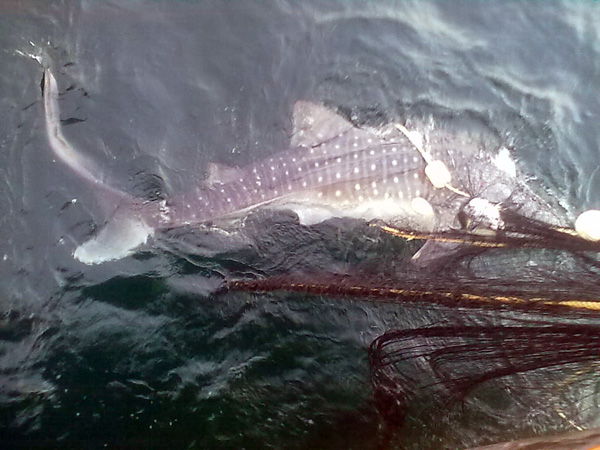
Between 2016 and 2019, all 700 tuna fishing boats began using the same demersal net. These nets are also used by fishermen in Oman, Iran.
WWF Pakistan Community Development Officer Nadeem Shaikh says that WWF Pakistan further innovated in 2019 by introducing the Lifeline Net. Instead of a long net, it is a single long line surrounded by more than 4,000 hooks that are baited, he said. Traditionally, fishermen used julong lines with J-shaped hooks, which were more likely to catch other marine species, especially turtles. Because these hooks were floating near the surface of the sea. WWF Pakistan introduced circular hooks along with these J-shaped hooks and trained fishermen to set the hook 70 meters below sea level. Turtles, sharks and whales can be caught in these hooks at this depth. Getting stuck was almost impossible.
Nadeem Shaikh says that according to the data of WW Pakistan, from 2018 to 2022, only 6 turtles were caught in this new method i.e. living line, which were safely released into the sea by trained fishermen. While there are no reports of whales, sharks or dolphins being hunted.
According to Kayani, assistant professor of Karachi University, longline and sub-surface gill nets are undoubtedly the best for sustainable fishing and conservation of marine resources as they protect rare marine species, but it is not enough, awareness and awareness among fishermen. In addition, the government should also enforce the laws.
Mahi Gary of the The new method Effects on car fishermen
The fishing industry accounts for less than 1% of Pakistan’s GDP and provides employment to 1.8 million people.
WWF Pakistan’s Nadeem Shaikh, who hails from a very marginalized community of fishermen, says poverty and lack of access to basic amenities are still common. They say that the use of longline gear in fishing is a welcome development for the substantial increase in the income of fishermen.
Muhammad Ali Ibrahim is one of the three lucky fishermen from Haidari who were selected by WWF Pakistan for its Sustainable Fisheries Entrepreneurship Project, under which lifelines were installed on three boats. Muhammad Ali told Third Poll that using Lifeline changed his life. Now his income is three times more than before. They used to earn 600,000 Pakistani rupees (US$2,300) a year, but now they can earn up to 2,000,000 (US$7,600) a year. Longlines are used in the deep sea instead of on the beaches, where larger fish are easily found. The sale of which brings good money.
Clove line Mahi Gary And fishes of Storage
By adopting new methods of more efficient and successful fishing, the question arises whether it will increase the pressure on the fish resources and their population will not decrease.
WWF Pakistan’s Nadeem Shaikh says that some of the fish species that are commonly caught by longline are on the IUCN Red List that their population is declining, but all of them. are included in the “low risk” rank.
Nadeem added that longline puts less pressure on the fish population or species and is the most effective in that it is better to catch fewer large fish than to catch large numbers of small fish as in gill nets. happens.
Nadeem Sheikh added that installing lifeline equipment on a boat costs about 900,000 Pakistani rupees, or 3,400 US dollars. WWF provides half of this cost. Recently 15 more boats have been fitted with living line gear. Seeing the success of this method, tens of fishermen have installed longline gear in their boats and 65 boats are fishing with longline in Karachi’s Ibrahim Haidari and Lagigoth. This is changing the lives of about 980 fishermen who are earning three times more than other fishermen.
So far, only 4% of the fishing industry has adopted efficient and sustainable fishing practices. And it’s almost impossible to switch an entire fleet of boats to longline or subsurface gill nets because the structure of the boats, the gear they’re on, and what fish they’re catching, in which waters, are different, says Nadeem. It’s all different when I’m fishing. “But we are trying and working with the concerned government departments for this purpose and also working to increase awareness and awareness among the fishermen to protect the marine resources. Change or innovation in traditional fishing gear requires resources for which we are involving the commercial sector in environmental conservation activities.”
Marine life scientist Kayani is optimistic that “with the provision of proper fishing equipment, education and capacity building programs for fishermen, we can restore the declining populations of marine species. Some of which are on the verge of extinction.
This article has been published on The Third Poll website, jointly written by Shabina Faraz and Asif Sandilo.
(function(d, s, id){
var js, fjs = d.getElementsByTagName(s)[0];
if (d.getElementById(id)) {return;}
js = d.createElement(s); js.id = id;
js.src = “//connect.facebook.net/en_US/sdk.js#xfbml=1&version=v2.3&appId=770767426360150”;
fjs.parentNode.insertBefore(js, fjs);
}(document, ‘script’, ‘facebook-jssdk’));
(function(d, s, id) {
var js, fjs = d.getElementsByTagName(s)[0];
if (d.getElementById(id)) return;
js = d.createElement(s); js.id = id;
js.src = “//connect.facebook.net/en_GB/sdk.js#xfbml=1&version=v2.7”;
fjs.parentNode.insertBefore(js, fjs);
}(document, ‘script’, ‘facebook-jssdk’));

